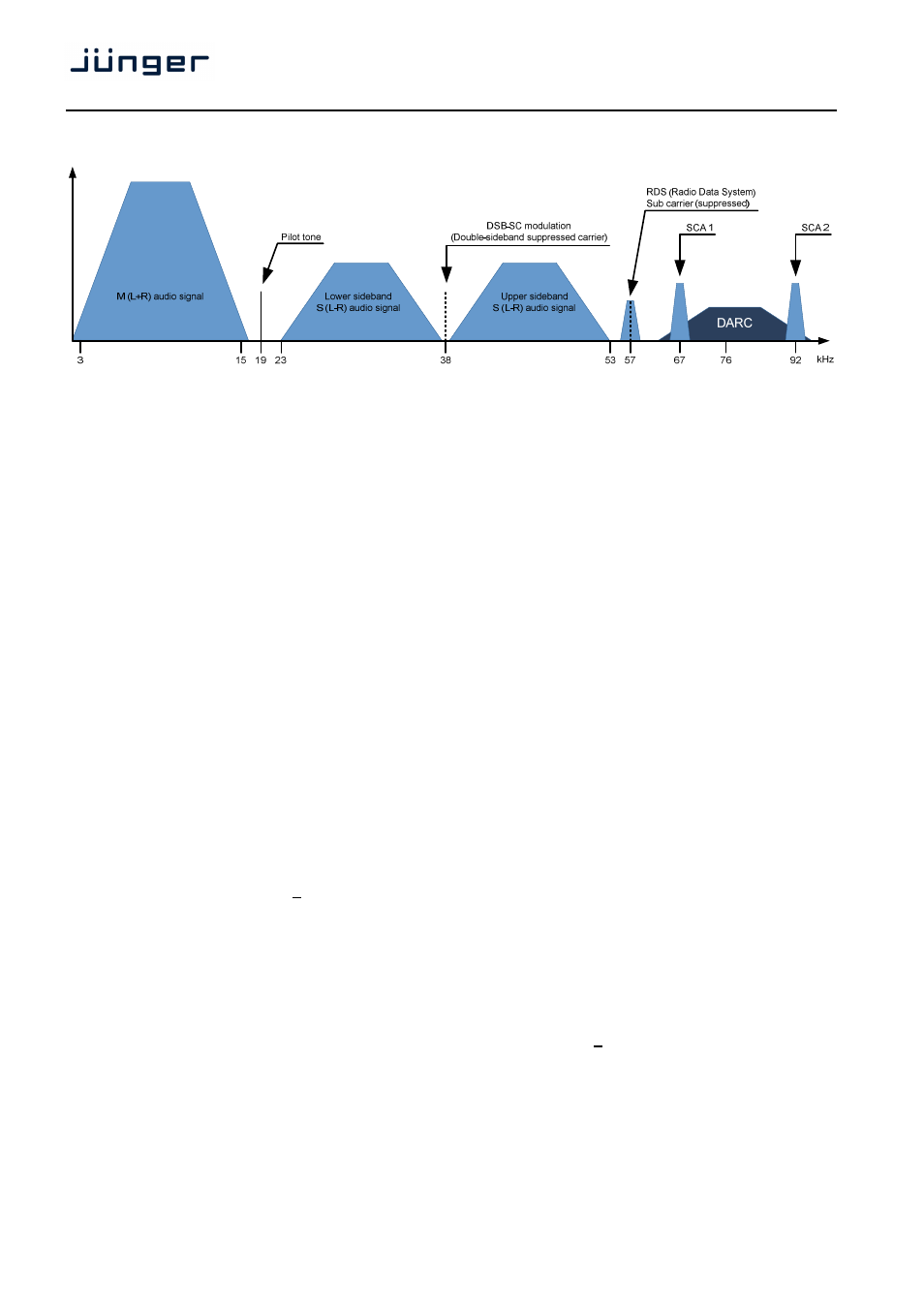D*ap4 – Junger Audio D*AP4 FLX / D*AP4 LM Edition User Manual
Page 55

D*AP4
50
Setup GUI – AUDIO PROCESSOR – FM Conditioner
FM radio broadcast is not just frequency modulated audio. It consists of different signals and services that
share the ‘space’ available on the FM carrier. A typical stereo radio signal spectrum may look like this:
Mono audio signal (M=L+R)
30 Hz to 15 kHz base band
Stereo pilot tone at 19 kHz
approximately 9 % of 75 kHz deviation
Stereo audio signal (S=L-R)
30 Hz to 15 kHz base band
DSB-SC carrier
Double-sideband suppressed carrier
RDS signal
Radio Data Signal at 1187,5 Bit/s
DARC signal
Data Radio Channel at about 16 000 Bit/s
SCA signal
14 kHz (narrow) or 26 kHz (wide) bandwidth for auxiliary audio
services
To calculate the overall MPX power the spectrum power of all consisting signals needs to be considered.
Please note that within the FM Conditioner Web UI only RDS and SCA Deviation can be set as additional
services. As SCA and DARC normally cannot be used simultaneously due to their overlapping frequency
bands, the SCA Deviation parameter can be used for DARC also. To calculate the overall deviation, all of the
services in use must be taken into account in order to not exceed the modulation limits defined by the ITU
(see below). After setup this happens internally and is not of concern for the FM Conditioner user.
When dealing with the audio processing side of FM broadcast, four main parameters come into focus:
* Deviation
∆
f
c
of the transmission frequency (carrier) f
c
* MPX Power of the modulating signal (modulator)
* Pre-Emphasis to enhance the signal-to-noise ratio of FM transmission
* Baseband bandwidth of all involved services (audio signals and auxiliary data)
ITU-R BS.412 has standardized the maximum values for these parameters. Broadcasters must comply
with these limits to not exceed the planned coverage or interfere with adjacent programs. They are:
* Maximum peak deviation of +75 kHz
* Maximum MPX power of 0 dBr
* A typical audio baseband cut-off at 15 kHz to ensure undisturbed transmission of the
19 kHz stereo pilot tone
* For mono operation a typical audio baseband bandwidth of 17.5 kHz is utilized (no pilot tone necessary)
Calibration
MPX power is measured in a random interval of 60 s. MPX power of 0 dBr should be equal to the
modulation power of a stationary sine signal that causes a deviation of +19 kHz. A stimulus frequency
of 500 Hz is recommended.
The necessary tasks to comply to this rule ‘are simple’: take your pocket power measurement
instrument, hook up your always at fingertip reference antenna, tune into your transmitter and
measure… Now adjust the relevant audio parameters if necessary. Since this is not feasible for studio
equipment we must calculate MPX power prior to modulation and translate them for the studio output.
For a precise calculation all technical equipment needs to be gain matched and calibrated.
